Posté par Pascale Dubus, le 12 juin 2014;
- Date limite : 30 Juin 2014
- Date et lieu des rencontres : 8 novembre 2014, The Courtauld Institute of Art, Londres.
 The hand – the “instrument of instruments” – has fascinated artists, scientists and philosophers from Aristotle onwards. Its remarkable dexterity, anatomical complexity, and the ability to manipulate were seen as defining features distinguishing humanity from animality, as well as indicators of the superiority of the former. The hand – the “instrument of instruments” – has fascinated artists, scientists and philosophers from Aristotle onwards. Its remarkable dexterity, anatomical complexity, and the ability to manipulate were seen as defining features distinguishing humanity from animality, as well as indicators of the superiority of the former.
Taking as its starting point the sixteenth-century humanist Dominicus Lampsonius’ claim that ‘the Netherlander / Has intelligence in his hand’, this one-day Symposium will investigate the hand both as the means and the subject of representation in Early Modern art and visual culture.
Participants are invited to explore the hand as the . . . → En lire plus
Posté par Pascale Dubus, le 1 juin 2014;
- Date limite : 1er août 2014
- Date et lieu de la journée d'étude : 7 novembre 2014, Londres, Wellcome Trust
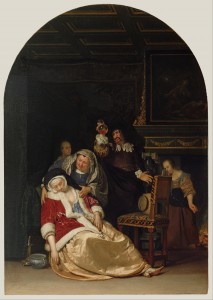 Organised by the Association of Art Historians, this conference seeks to address the relationship between art and health across different historical periods, with a particular emphasis on what the discipline of art history might bring to the study of visual objects and images in the emerging field of the medical humanities. Organised by the Association of Art Historians, this conference seeks to address the relationship between art and health across different historical periods, with a particular emphasis on what the discipline of art history might bring to the study of visual objects and images in the emerging field of the medical humanities.
We welcome paper proposals from graduate students and early career scholars working with visual materials in a wide range of disciplines including but not limited to art history, fine arts, film and visual culture, art therapy, medicine and literary or cultural studies. . . . → En lire plus
Posté par Sarah Feron, le 27 mai 2014;
- Date et lieu de la journée d'étude : Mardi 3 juin 2014
Collège de France
 Ces archives, conservées dans la Bibliothèque générale du Collège de France, peuvent être rattachées à trois personnages qui se sont parfois retrouvés sur le même terrain scientifique : Pierre Janet (1859-1947), qui détenait la chaire de psychologie expérimentale comparée au Collège de France de 1902 à 1934 ; Georges Dumas (1866-1946), professeur de psychologie et Charles-Émile François-Franck (1845-1921), professeur de physiologie comparée au Collège de France de 1905 à sa mort. Au point de départ de ce fonds, il y a la série de cours donnés par ce dernier entre 1900 et 1901 (« L’expression des émotions à l’état normal et pathologique », et « Le langage articulé et la mimique dans leurs rapports avec les émotions ») quand il . . . → En lire plus Ces archives, conservées dans la Bibliothèque générale du Collège de France, peuvent être rattachées à trois personnages qui se sont parfois retrouvés sur le même terrain scientifique : Pierre Janet (1859-1947), qui détenait la chaire de psychologie expérimentale comparée au Collège de France de 1902 à 1934 ; Georges Dumas (1866-1946), professeur de psychologie et Charles-Émile François-Franck (1845-1921), professeur de physiologie comparée au Collège de France de 1905 à sa mort. Au point de départ de ce fonds, il y a la série de cours donnés par ce dernier entre 1900 et 1901 (« L’expression des émotions à l’état normal et pathologique », et « Le langage articulé et la mimique dans leurs rapports avec les émotions ») quand il . . . → En lire plus
Posté par Erika Wicky, le 11 mai 2014;
- Date et lieu des rencontres : 22-23 mai, Montreal, UQUAM, Pavillon Athanase-David
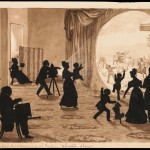
Colloque international
22 et 23 mai / 22-23 May 2014
Université du Québec à Montréal
Organisateurs : Érika Wicky, Joanne Lalonde et Vincent Lavoie
Groupe de recherche RADICAL (Repères pour une articulation des dimensions culturelles, artistiques et littéraires de l’imaginaire contemporain), CRSH – Programme savoir
Jeudi 22 mai / Thursday May 22th
9h – accueil des participants
9h30
Bertrand Gervais, directeur du centre de recherche Figura, UQAM
Mot de bienvenue
Érika Wicky, UQAM
Introduction
10h – Spectacles
Président de séance / Chair : Vincent Lavoie, UQAM
Marc-Emmanuel Mélon, Université de Liège
Projections photographiques vs cinéma : clivage des dispositifs ou clivage social ? Le cas de La Houillère (1905) de Gustave Marissiaux
Noémi . . . → En lire plus
Posté par Leonard Pouy, le 26 avril 2014;
- Date limite : 31 octobre 2014
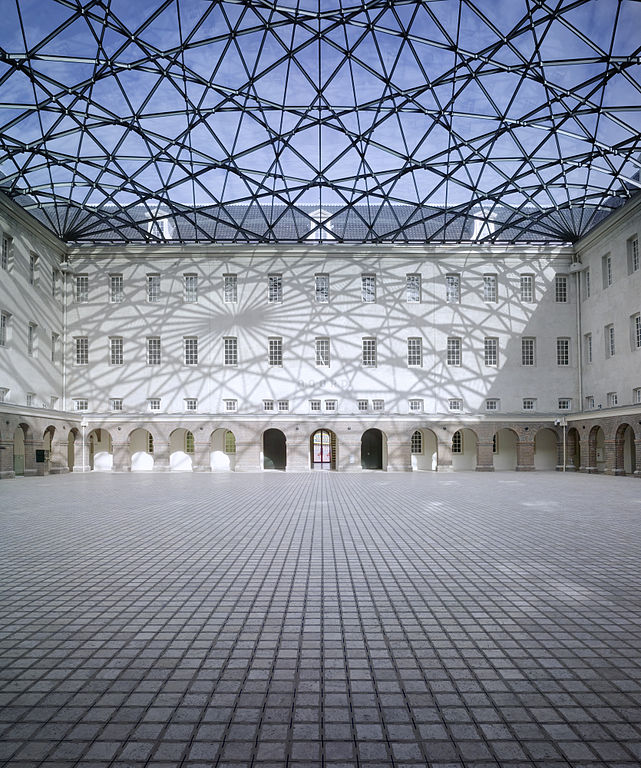 Het Scheepvaartmuseum (the National Maritime Museum) and the Society Dutch Historical Maritime Museum promote scientific research on the museum’s collection. A special foundation has been set up and every year three fellowships are granted to students and academics from the Netherlands and abroad: the Dr. Ernst Crone fellowship, the Mr. Peter Rogaar fellowship and the Prof. J.C.M. Warnsinck fellowship. Het Scheepvaartmuseum develops its collection around five main themes and has defined five research areas connected to the five main themes: Sailing folk, Water recreation, Art and the maritime world, The Dutch and the other and Innovation in shipbuilding. We kindly ask candidates who wish to apply for a fellowship to submit a . . . → En lire plus
Posté par Olivier Bonfait, le 29 mars 2014;
- Date limite : 15 juillet 2014, 15 juillet 2014
Call for Papers: Color in Ancient Global History
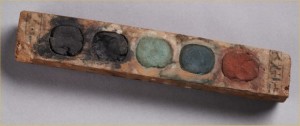 Recently the subject of color in antiquity has found a voice and has received considerable attention in scholarship. The reconstruction of ancient monuments and material culture has been one aspect of this discussion. Studies of race and color in the ancient world have also been considered. The subject of color, however, may also be considered from a global viewpoint that addresses world historical approaches and the complex interconnections that exist in trade. Areas such as Mesopotamia, India, Africa, China and the New World may shed light on the subject of color and its importance in ancient times. We are seeking papers to . . . → En lire plus Recently the subject of color in antiquity has found a voice and has received considerable attention in scholarship. The reconstruction of ancient monuments and material culture has been one aspect of this discussion. Studies of race and color in the ancient world have also been considered. The subject of color, however, may also be considered from a global viewpoint that addresses world historical approaches and the complex interconnections that exist in trade. Areas such as Mesopotamia, India, Africa, China and the New World may shed light on the subject of color and its importance in ancient times. We are seeking papers to . . . → En lire plus
Posté par Sébastien Bontemps, le 21 mars 2014;
- Date et lieu : 1er avril 2014, Les Arts Décoratifs, 111, rue de Rivoli, Paris
 Les Arts Décoratifs Les Arts Décoratifs
Journée d’études
Mardi 1er avril 2014
Les secrets de la laque française. Le vernis Martin
PROGRAMME
9h30 Introduction
10h De la laque au vernis Martin. Tentatives, renoncements et succès
par Stéphane Castelluccio, chargé de recherche au CNRS HDR, centre André Chastel.
10h30 L’atelier royal de laque à la manufacture des Gobelins
par Thibaut Wolvesperges, maître de conférences, Université Paris Sorbonne.
11h15 Décors « à la Chine » et laque française : l’exemple des clavecins
par Alain Anselm, organologue et facteur d’instruments
et Marie-Christine Anselm, historienne de l’art.
11h45 Le vernis Martin au XIXe siècle : chronique d’une mort annoncée
par Sophie Motsch, assistante de conservation au . . . → En lire plus
Posté par Sébastien Bontemps, le 13 mars 2014;
- Date limite : 31 mai 2014
- Date et lieu du colloque : 14-16 mai 2015,Montréal
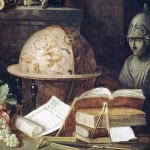 Coping with Copia : Surabondance épistémologique entre art et science dans la première modernité Colloque à Montréal, 14-16 mai 2015 Coping with Copia : Surabondance épistémologique entre art et science dans la première modernité Colloque à Montréal, 14-16 mai 2015
Nous vivons dans une ère de débordement d’informations sans précédent.
Voilà un des lieux communs les plus fréquemment utilisés pour caractériser
ce début du XXIe siècle, à la fois dans le débat universitaire et dans l’imaginaire
collectif. Comme souvent dans le cas des lieux communs, celui-ci comporte une
part de vérité. L’ère d’Internet représente en effet, au moins d’un point de vue quantitatif,
la plus formidable multiplication d’informations disponibles que l’humanité n’ait
jamais vécue. Une grande partie de ces informations prend une forme visuelle :
nous avons à notre disposition toujours plus d’images et de diagrammes
représentant toutes sortes . . . → En lire plus
Posté par Olivier Bonfait, le 11 mars 2014;
- Date et lieu de la journée d'études : 16 avril, Université de Mulhouse, 16 avril, Université de Mulhouse
Le dessinateur dans les arts décoratifs et industriels, un technicien ou un artiste ? Entre savoir-faire et créativité
Mercredi 16 avril 2014
Journée d’études
organisée par le CRESAT, Centre de Recherche sur les économies, les sociétés, les arts et les techniques
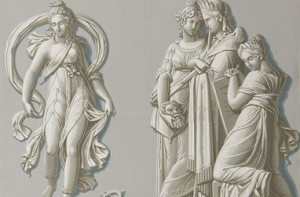 Entre le XVIIIe et le XXe siècle, le métier de dessinateur dans les arts décoratifs et industriels connaît de profondes mutations. Le textile, le papier peint, mais aussi les arts du feu, la verrerie, les bijoux, le mobilier, etc. tous, puisent leur source dans le dessin. La notoriété des créations dans les ateliers et les entreprises repose en grande partie . . . → En lire plus Entre le XVIIIe et le XXe siècle, le métier de dessinateur dans les arts décoratifs et industriels connaît de profondes mutations. Le textile, le papier peint, mais aussi les arts du feu, la verrerie, les bijoux, le mobilier, etc. tous, puisent leur source dans le dessin. La notoriété des créations dans les ateliers et les entreprises repose en grande partie . . . → En lire plus
Posté par Damien Bril, le 21 janvier 2014;
- Date et lieu du colloque : 18 avril 2014, Montréal
- Date limite : 24 janvier 2014
Montreal, QC, April 18, 2014 Deadline-CFP: 24 janv. 2014 http://ahcsconference.wordpress.com
Call for Proposals
INNOVATION AND ITS CONTESTANTS
 5th Annual Emerging Scholars Conference McGill University Department of Art History and Communications Studies 5th Annual Emerging Scholars Conference McGill University Department of Art History and Communications Studies
Keynote Speaker: Keith Moxey, Barbara Novak Professor of Art History and Department Chair at Barnard College (Columbia University)
Deadline for Submissions: 24 January 2014
The concept of innovation buttresses a paradigmatically modern Western belief in the possibility of infinite economic growth and technological progress. It is in fact a buzzword with remarkable contemporary currency, one that is instrumentalized as a constant search for new technologies, means of production, market adaptations, scientific discoveries and social changes. As a fundamental . . . → En lire plus
Posté par Damien Bril, le 29 décembre 2013;
- Date limite : 10 janvier 2014
Images qui font signe. Modes et pratiques de représentation diagrammatique dans les informational images
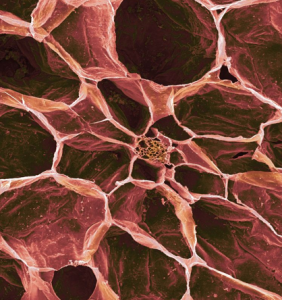 Photographies au microscope, diagrammes, illustrations techniques, cartes, graphiques. Il s’agit d’objets visuels de plus en plus présents, dans les médias et dans la vie quotidienne, dans la nécessité de dominer, d’un point de vue cognitif et visuel, la complexité du monde contemporain, tissé de données et d’informations. Objets visuels différents mais réunis sous la catégorie d’informational images (Elkins), c’est-à-dire images capables de véhiculer des informations et de représenter concepts et relations. Photographies au microscope, diagrammes, illustrations techniques, cartes, graphiques. Il s’agit d’objets visuels de plus en plus présents, dans les médias et dans la vie quotidienne, dans la nécessité de dominer, d’un point de vue cognitif et visuel, la complexité du monde contemporain, tissé de données et d’informations. Objets visuels différents mais réunis sous la catégorie d’informational images (Elkins), c’est-à-dire images capables de véhiculer des informations et de représenter concepts et relations.
Les articles pourront développer le thème de la représentation diagrammatique à partir de différents objets visuels (images scientifiques, artistiques, visualisations de données et d’informations, images . . . → En lire plus
Posté par Damien Bril, le 29 novembre 2013;
- Date limite : 16 décembre 2013
- Date et lieu du colloque : 3-5 avril 2014, Saint Louis
Saint Louis, MO, April 3 – 05, 2014 Deadline-CFP: 16 déc. 2013 http://www.mahsonline.org/call_for_papers_2014.asp
Call For Papers
Kinetic Art: Then and Now Session at the Midwest Art History Society Annual Conference, St. Louis, MO
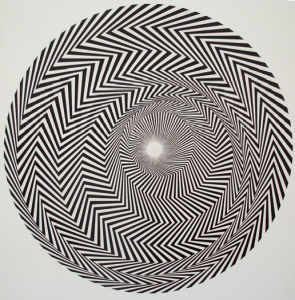 In the mid-1950s and 1960s kinetic art became an international phenomenon. With no single leader, manifesto, or aesthetic the term covers a wide range of works involving actual and optical movement, as well as works that demand collaborative engagement in the form of audience interaction. Tracing a lineage through early twentieth century avantgarde artists, such as Marcel Duchamp, Naum Gabo, and Laszlo Moholy-Nagy, the revival of interest in kinetic practices in the postwar period . . . → En lire plus In the mid-1950s and 1960s kinetic art became an international phenomenon. With no single leader, manifesto, or aesthetic the term covers a wide range of works involving actual and optical movement, as well as works that demand collaborative engagement in the form of audience interaction. Tracing a lineage through early twentieth century avantgarde artists, such as Marcel Duchamp, Naum Gabo, and Laszlo Moholy-Nagy, the revival of interest in kinetic practices in the postwar period . . . → En lire plus
Posté par Damien Bril, le 24 novembre 2013;
- Date limite : 15 janvier 2014
- Date et lieu du colloque : 6 juin 2014, Londres
MacRae Gallery, Hunterian Museum of the Royal College of Surgeons, London, June 6, 2014 Deadline-CFP: 15 janv. 2014
 Collect, Exchange, Display: Artistic Practice and the Medical Museum (London, 6 June 2014) Collect, Exchange, Display: Artistic Practice and the Medical Museum (London, 6 June 2014)
For hundreds of years, medical collections have been sites of medical and artistic exchange. Not only were many of their contents created by artists and physicians, but the collections were also often compiled by doctors, who were themselves artistes manqués. Although medical museums have recently received attention in museological and historical studies, they remain relatively ignored within art historical scholarship.
This one-day conference will look at the anatomical, pathological or medical museum from the perspectives of . . . → En lire plus
Posté par Matthieu Lett, le 14 octobre 2013;
- Date limite : 9 décembre 2013
Columbia’s Italian Academy invites applications for projects in the humanities, sciences, and social sciences. These may be related to all aspects of cultural memory; to research at the intersection of history, ethnography, and anthropology; to the relationship between contemporary and historical cultures; and to the histories of art, music, literature and philosophy.
In the fields of science, technology and engineering, applications that relate to Columbia’s strengths will be welcomed.
Applications dealing with the scientific and technological aspects of culture and memory are also encouraged. Special consideration will be given to proposals in the neurosciences relevant to the Academy’s ongoing project in Art and Neuroscience.
Two Alexander Bodini Research Fellowships are also offered: in Developmental and Adolescent Psychiatry, and in Culture and Religion.
Fellowships are open to both US and non-US . . . → En lire plus
Posté par ckikuchi, le 10 octobre 2013;
- Date limite : 1er novembre 2013
- Date et lieu des rencontres : 8 novembre 2013 et 13 décembre 2013, 18-20hParis, à la Maison de la Recherche de la Sorbonne (28 rue Serpente, 75005), en salle D223.
Appel à communication sur « L’échec, l’erreur, la faute » pour les séances de Questes des 8 novembre et 13 décembre 2013
« Errare humanum est, sed persevare diabolicum » écrit saint Augustin. À sa suite, les hommes du Moyen Âge pensent l’erreur, l’échec, la faute. Travailler sur ces notions, c’est se plonger au cœur du monde médiéval ; c’est l’aborder par le revers de la médaille, en s’intéressant non pas à ses succès mais à leurs contraires, sans pour autant retomber dans le mythe d’un Moyen Âge obscurantiste. Trois niveaux de lecture se dégagent :
– Une lecture morale et théologique, d’abord, qui insiste, dans l’ombre de la Chute, sur la nature faillible de l’homme, sa rétribution et sa rédemption. Une lecture . . . → En lire plus
Posté par Pascale Dubus, le 16 juillet 2013;
- Date limite : 15 octobre 2013
- Date et lieu du colloque : 23-25 avril 2014, Autriche, Université de Vienne.
 Paper and panel proposals are invited for Scientiae 2014, the third annual conference on the emergent knowledge practices of the early modern period (ca. 1450-1750). The conference will take place on the 23-25 April 2014 at the University of Vienna in Austria, building upon the success of Scientiae 2012 (Simon Fraser University) and Scientiae 2013 (Warwick), each of which brought together more than 100 scholars from around the world. Paper and panel proposals are invited for Scientiae 2014, the third annual conference on the emergent knowledge practices of the early modern period (ca. 1450-1750). The conference will take place on the 23-25 April 2014 at the University of Vienna in Austria, building upon the success of Scientiae 2012 (Simon Fraser University) and Scientiae 2013 (Warwick), each of which brought together more than 100 scholars from around the world.
The premise of this conference is that knowledge during the period of the Scientific Revolution was inherently interdisciplinary, involving complex mixtures of practices and objects which had yet . . . → En lire plus
Posté par Pascale Dubus, le 11 juillet 2013;
- Date limite : 30 septembre 2013
- Date et lieu du colloque : 10–12 juillet 2014, Allemagne, Frankfurt am Main.
 In his Ricordi published in 1554, Fra Sabba da Castiglione describes a scene in which art and nature are in opposition to and – to the same degree – close reciprocal relationship to one another. Suffering from the crippling heat of a July day, the humanist seeks refuge in the shade of a tree in his overgrown garden in Faenza, and there experiences a special instance of art enjoyment : in natural surroundings, he immerses himself in the contemplation of his recently acquired Dürer engraving and admires its figures, animals, landscapes and vistas. In his Ricordi published in 1554, Fra Sabba da Castiglione describes a scene in which art and nature are in opposition to and – to the same degree – close reciprocal relationship to one another. Suffering from the crippling heat of a July day, the humanist seeks refuge in the shade of a tree in his overgrown garden in Faenza, and there experiences a special instance of art enjoyment : in natural surroundings, he immerses himself in the contemplation of his recently acquired Dürer engraving and admires its figures, animals, landscapes and vistas.
Sabba da Castiglione’s account sparks fundamental questions about the relationship . . . → En lire plus
Posté par Sébastien Bontemps, le 3 juillet 2013;
- Date et lieu du colloque : La Hague, 7-9 mai 2014
- Date limite : 13 septembre 2013
 Subject: CFP: Authentication of Paintings (The Hague, 7-9 May 14) Subject: CFP: Authentication of Paintings (The Hague, 7-9 May 14)
The Hague, May 7 – 09, 2014 Deadline: Sep 13, 2013
Conference on Authentication of Paintings Call for Papers
Authentication in Art invites submissions of proposals of 500-700 words (up to 3000 characters) for oral presentations, to be given at the conference in The Hague, The Netherlands, 7-9 May, 2014 (Please see for more details: http://www.authenticationinart.org/ and http://www.authenticationinart.org/call-for-papers/). Due to the multitude of problems that have become ever more prominent around establishing authorship of paintings and authenticity, the identification of fakes, and the contextual and legal issues associated with this process, the conference Authentication in Art has been established.
Conference Language: The conference language is English.
Topics: Papers addressing . . . → En lire plus
Posté par Matthieu Lett, le 18 juin 2013;
- Date et lieu du colloque : 14-15 novembre 2013, ETH Zürich, Science City Campus
- Date limite : 28 juillet 2013
 Universal – Specific. From analysis to intervention? Universal – Specific. From analysis to intervention?
« No one sees the Earth globally. » Or: « A crowded place of risk and unwanted consequences. » (B. Latour, 2011)
The universal – specific opposition has been central to epistemological debates and methodological shifts within the history of most (if not all) scientific disciplines. An equivalent dualism confronts artists and architects addressing a wide audience and/or planning and realizing transformative or critical interventions that involve both local factors and a range of far-reaching political, social or economic constellations and processes. This conference, in continuing our efforts to promote dialogue between the history of art and the . . . → En lire plus
Posté par Leonard Pouy, le 29 mai 2013;
- Date limite : 15 septembre 2013
- Date et lieu du colloque : 11-13 septembre 2014, Bruges.
 In preparation of the XIXth Symposium for the Study of Underdrawing and Technology in Painting to be held at Bruges, 11-13 September 2014, UCL (Louvain-la-Neuve), the Laboratoire d’Étude des œuvres d’art par les méthodes scientifiques (Musée de Louvain-la-Neuve) and Musea Brugge, in conjunction with the Royal Institute for Cultural Heritage (Brussels), its Centre for the study of the Flemish primitives, and Illuminare (Centre for the Study of Medieval Art, KULeuven), invite you to submit an abstract on the theme : In preparation of the XIXth Symposium for the Study of Underdrawing and Technology in Painting to be held at Bruges, 11-13 September 2014, UCL (Louvain-la-Neuve), the Laboratoire d’Étude des œuvres d’art par les méthodes scientifiques (Musée de Louvain-la-Neuve) and Musea Brugge, in conjunction with the Royal Institute for Cultural Heritage (Brussels), its Centre for the study of the Flemish primitives, and Illuminare (Centre for the Study of Medieval Art, KULeuven), invite you to submit an abstract on the theme :
Technical Studies of paintings: problems of attribution (15th-17th century)
Attribution is a central question in art history. Since the introduction of new examination techniques such . . . → En lire plus
|
Équipe Rédacteur en chef : Olivier Bonfait.
Rédacteurs : Elliot Adam (Moyen Age) ; Nicolas Ballet (XX-XXIe siècles) ; Matthieu Fantoni (musées) ; Antonella Fenech Kroke (bourses) ; Vladimir Nestorov (Lettre mensuelle)
Administrateur web : Matthieu Lett.
ancien éditeur : Pascale Dubus
anciens rédacteurs : Gautier Anceau, Sébastien Bontemps, Damien Bril ; Sébastien Chauffour ; Ludovic Jouvet ; Aude Prigot
|
 The hand – the “instrument of instruments” – has fascinated artists, scientists and philosophers from Aristotle onwards. Its remarkable dexterity, anatomical complexity, and the ability to manipulate were seen as defining features distinguishing humanity from animality, as well as indicators of the superiority of the former.
The hand – the “instrument of instruments” – has fascinated artists, scientists and philosophers from Aristotle onwards. Its remarkable dexterity, anatomical complexity, and the ability to manipulate were seen as defining features distinguishing humanity from animality, as well as indicators of the superiority of the former. 



 Het Scheepvaartmuseum (the National Maritime Museum) and the Society Dutch Historical Maritime Museum promote scientific research on the museum’s collection. A special foundation has been set up and every year three fellowships are granted to students and academics from the Netherlands and abroad: the Dr. Ernst Crone fellowship, the Mr. Peter Rogaar fellowship and the Prof. J.C.M. Warnsinck fellowship.
Het Scheepvaartmuseum (the National Maritime Museum) and the Society Dutch Historical Maritime Museum promote scientific research on the museum’s collection. A special foundation has been set up and every year three fellowships are granted to students and academics from the Netherlands and abroad: the Dr. Ernst Crone fellowship, the Mr. Peter Rogaar fellowship and the Prof. J.C.M. Warnsinck fellowship.











